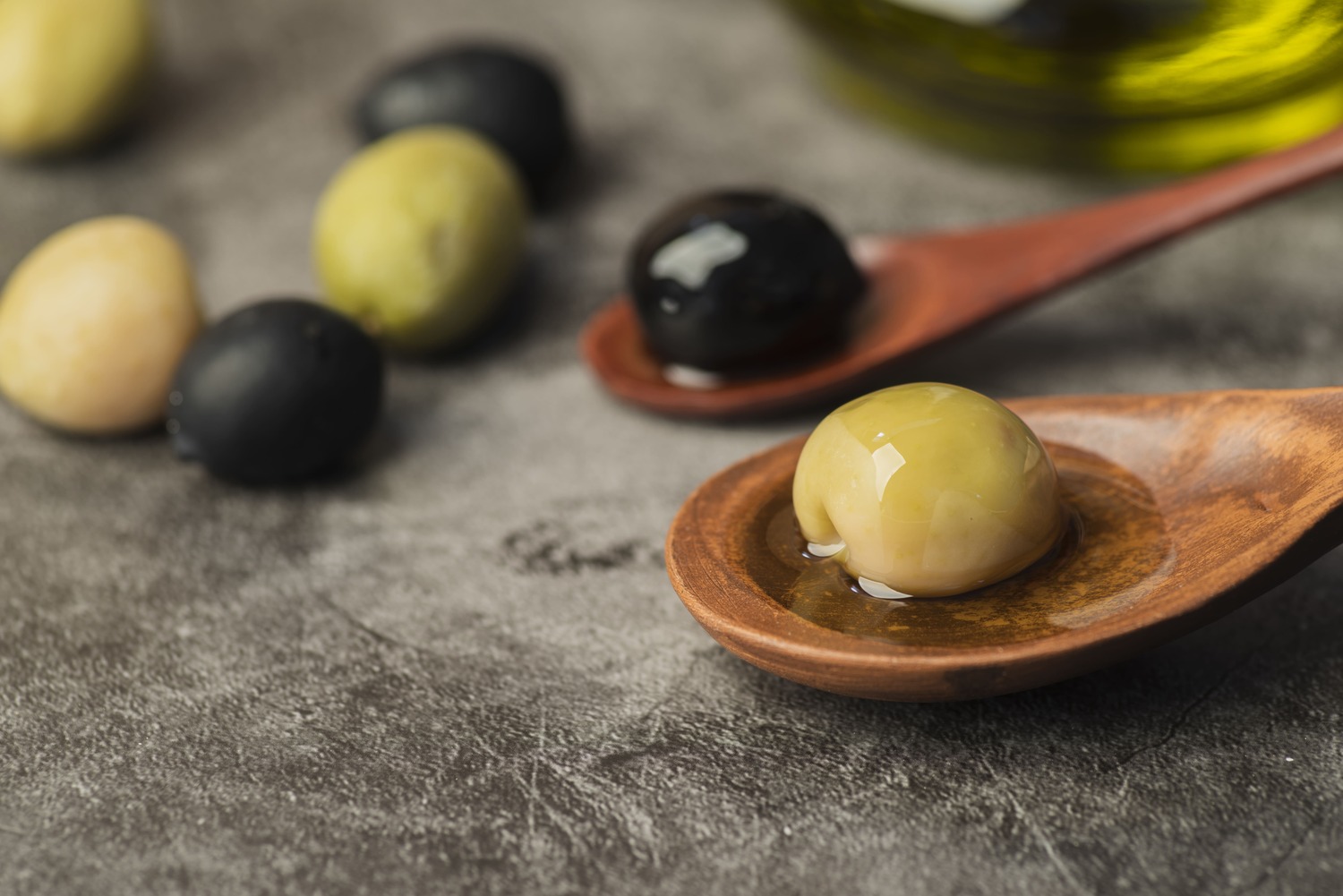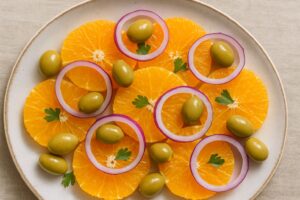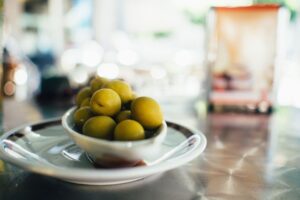Today’s consumer is increasingly informed and seeks authenticity, traceability, and sustainability in every product they consume. At Aceitunas Torrent, we believe it’s essential to share not only the flavor of our olives but also the know-how behind each variety we offer. Today, we address a seemingly simple question with deep technical, agronomic, and cultural implications: why aren’t olives eaten directly from the tree?
The olive as a fruit: botanical characteristics
The olive, fruit of the Olea europaea, is a drupe—like the peach or cherry. It is composed of three main parts: the skin (epicarp), the flesh (mesocarp), and the stone (endocarp), which protects the seed.
Relevant chemical composition:
- Oil: up to 25% by weight in oil-producing varieties.
- Water: more than 50%.
- Bitter phenols: especially oleuropein, responsible for the unpalatable taste in raw olives.
- Fermentable sugars: essential for controlled fermentation during the curing process.
The big issue: oleuropein
Oleuropein is a highly bitter phenolic compound. Its function in the plant is defensive: it acts as a natural repellent against insects, birds, and other predators.
Why can’t it be eaten raw?
A raw olive contains concentrations of oleuropein that make its taste excessively bitter, even for the most seasoned palates. This substance is not toxic, but it is organoleptically rejected.
Curing: an essential process
Curing is the set of biotechnological and physicochemical processes that remove or reduce oleuropein to acceptable levels while developing flavors, aromas, and textures appreciated by consumers.
Main methods
Natural brine curing
- Time: 6–12 months
- Mechanism: lactic fermentation
- Benefit: mild flavor, preserving nutritional properties.
Alkaline treatment (caustic soda)
- Fast: 6–24 hours
- Followed by multiple rinses to neutralize
- Ideal for Sevillana or Gordal-type olives
Dry curing (direct salting)
- Traditional for black varieties
- Intensifies flavor and reduces moisture
- Limited use due to volume loss
Oxidative curing
- Applied to black olives “California style”
- Artificially oxidized and stabilized in brine
- Technical process allowing for commercial standardization
Torrent Innovation: Tradition + Technology
At Aceitunas Torrent, we combine traditional know-how with the most advanced technologies in:
- Microbiological control of fermentation
- Automated management of timing and temperature
- Formulation innovations: THE COOLIVES is a line of gourmet-flavored olives, cured and seasoned through carefully controlled processes.
We also apply principles of sustainable production, such as:
- Brine reuse
- Reduction of water use in alkaline processes
- Use of photovoltaic energy in our facilities
What influences the type of curing?
Each variety requires a specific treatment based on its:
- Phenolic content
- Texture and thickness of the skin
- Commercial purpose (table olives, canned, gourmet)
- Target market: Spain, Europe, Latin America, or halal/kosher markets
Benefits of curing beyond flavor
Food safety
Curing reduces microbiological risk by eliminating compounds that could support the growth of undesirable microorganisms.
Nutritional improvement
During fermentation, beneficial compounds such as natural probiotics and healthy fatty acids are released.
Preservation
The process acts as a natural pre-preservative, extending shelf life without the need for aggressive artificial preservatives.
Aceitunas Torrent: much more than a snack
Our current product range reflects mastery of both traditional and modern curing techniques, adapted to contemporary tastes:
- Classics: traditional curing, authentic flavor.
- Stuffed: combinations with pepper or anchovy.
- Flavored: truffle, curry, Mediterranean seasoning… a sensory revolution!
- Snack format: ready-to-eat, anytime, anywhere.
Also, did you know that…?
- An olive can spend up to 9 months curing before being packaged.
- Curing directly affects the firmness of the flesh.
- In our facilities, we conduct the most thorough quality controls in accordance with international regulations and certifications to ensure top quality for packaging.










